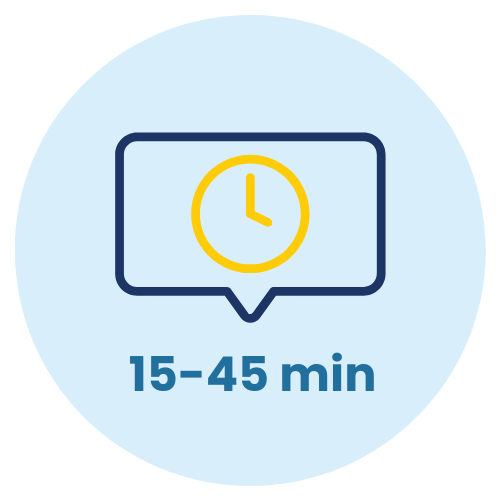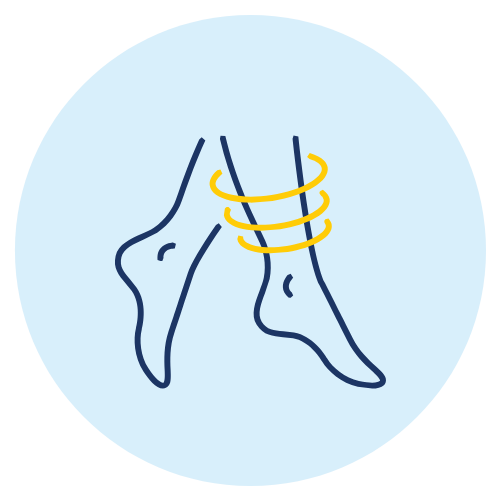Florida Vein
Care Specialists
Overcome leg pain & embarrassment with the latest technology and minimally invasive procedures.
- 10,000+ Happy Patients
- Board Certified General and Vascular Surgeons
- Specializing in minimally-invasive vein procedures since 2009
- 100+ physicians from all over the globe have trained at our vein academy

Florida Vein Care Specialists
- 10,000+ Happy Patients
- Board Certified General and Vascular Surgeons
- Specializing in minimally-invasive vein procedures since 2009
- 100+ physicians from all over the globe have trained at our vein academy
Overcome leg pain & embarrassment with the latest technology and minimally invasive procedures.
aching, tired, or swollen legs with visible veins.
- Leg Pain / Aching / Cramping
- Skin Changes / Discoloration
- Leg & Ankle Swelling
- Leg Heaviness & Fatigue
- Ulcers / Open Wounds / Sores
- Leg Restlessness
- Leg Itching / Burning / Numbness
- Varicose Veins or Spider Veins
Get relief today.
Why Choose Florida Vein Care Specialists?
-

Insurance
We accept most major insurance and many others. Please give us a call if you have any questions.
-

Fast Treatment
Your varicose-vein-free journey can start with treatments that only take 15-45 minutes.
-

Pain-Free
Equipped with the latest cutting-edge vein treatments that are minimally invasive and pain-free!
-

Fast Recovery
Most of our patients return to their normal day-to-day activities post-venous treatments!
Best Vein Specialists in Central Florida

Chris Meyer
MD, FACS, RVT
View Bio

Jared Reiss
PA-C
View Bio

Raul Leoni
MSN, NP-C
View Bio

Danny Cheng
PA-C
View Bio
Top Rated Vein Clinic in Central Florida

 ♥️
♥️Vein Treatment Process
-

1. Consultation
Your first visit includes a consultation with one of our providers and their expertly trained team.
-

2. Ultrasound
After the consult, we move on to the assessment and provide an accurate diagnosis. You will get the same day ultrasound and results on site while you see the provider.
-

3. Treatment Plan
After we conclude our assessment, you will receive a custom treatment plan based on your needs and outcome goals.
-

4. Live an Active Life Again
Get back to doing the things you love most. Get back to being active and enjoy the way you feel.
Get relief today.
Eight Vein Centers in Central Florida
East Orlando
Melbourne
Volusia
Orlando
Winter Park
Winter Haven
Daytona Beach
Apopka
Treatment for Varicose Veins

1. Symptoms Worsen Over Time
Vein disease is progressive, meaning its symptoms can become more severe over time and can result in serious issues.
2. Misdiagnosed
3. Easily Treated

“What an amazing experience. I’m grateful Dr. Meyer was an absolute blessing. His medical team Sahony and Ashley made me feel welcomed right away. Dr. Meyer was attentive, proactive, caring, and his knowledge was/is beyond my expectations. His office was properly equipped to perform my procedure same day. Thank you Dr. Meyer and staff. See you soon!“
– Heidi
Trusted by thousands of patients across Florida

“What an amazing experience. I’m grateful Dr. Meyer was an absolute blessing. His medical team Sahony and Ashley made me feel welcomed right away. Dr. Meyer was attentive, proactive, caring, and his knowledge was/is beyond my expectations. His office was properly equipped to perform my procedure same day. Thank you Dr. Meyer and staff. See you soon!“
– Heidi
Trusted by thousands of patients across Florida
Florida Vein Care Blog
Insights on vein care from our specialists

Chronic Venous Insufficiency

5 Hidden Dangers of Varicose Veins
Is It Vein Disease?
Vein Disease Videos
Chronic Venous Insufficiency
Overview of Leg Swelling
How We Treat Vein Disease
May-Thurner Syndrome
May-Thurner Syndrome is a condition in which a vein is being compressed by an artery leading to the risk of a clot, leg swelling, and other uncomfortable leg symptoms.
We offer advanced, minimally invasive solutions to restore proper circulation and alleviate symptoms. Don’t let discomfort hold you back—schedule a consultation today and take the first step toward healthier legs.
May-Thurner Syndrome
May-Thurner Syndrome is a condition in which a vein is being compressed by an artery leading to the risk of a clot, leg swelling, and other uncomfortable leg symptoms.
We offer advanced, minimally invasive solutions to restore proper circulation and alleviate symptoms. Don’t let discomfort hold you back—schedule a consultation today and take the first step toward healthier legs.
Frequently Asked Questions
In your leg, you have two sets of veins. They are called deep veins and superficial veins.
Deep veins are in the deeper part of the leg where the muscles are, and superficial veins are right under the skin.
In a normal person, the blood would circulate from the feet towards the heart in both sets of veins.
When someone has a venous insufficiency the blood will actually go up the deep veins and then go backwards into the superficial vein.
The blood will start pooling in the superficial veins.
Since the superficial veins are closest to the skin, they will start to bulge and create varicose veins. They are often bluish or purple in color.
Spider Veins are essentially a smaller version of varicose veins. They are red, purple, and blue vessels that are also twisted and turning. They are most often seen on the legs, chest, or face.
No. Varicose veins can occur deeper in the leg, where one can’t see them. Varicose veins are classified under the spectrum of venous insufficiency disease.
Venous insufficiency disease causes leg discomfort, swelling of the ankles and leg, itching, and weariness. Other signs and symptoms may be prickling, cramping, aching, and heaviness of the lower limbs after prolonged standing.
Keep an eye out for these symptoms besides simply visible veins.
In short, no. Exercise and compression stockings may help reduce some of the symptoms of varicose veins, but usually only medical treatment can effectively get rid of a varicose vein.
Progression of varicose veins can be dangerous as they may later become venous ulcerations. When left without treatment, complications may ensure including rashes, infections, bleeding, sores, and blood clots.
In rare cases, varicose veins can cause deep vein thrombosis (DVT) and pulmonary embolism which is life-threatening.
Most major insurance and many others… Please give us a call.
Consult – We first start you with a consultation where you will be listened to and encounter a friendly staff that will make sure you get the best care. That care will come from Dr. Christopher Meyer and his expertly trained team, and will include a provider and an ultrasonographer on the first visit.
2) Ultra Sound – After the consult, we move on to the assessment where we provide you an accurate diagnosis. You will get the same day ultrasound and results on site while you see the provider. This will get you back to life as swiftly as possible.
3) Treatment Plan – After we conclude our assessment, we will provide you with a treatment plan.
There are many different options such as Endovenous Laser Therapy (EVLT), Radiofrequency Ablation (RFA), sclerotherapy, Vein Gogh Ohmic Thermolysis and more. We will ensure that you get the perfect customized treatment based on your needs and outcome goals.
Learn more by visiting “Our Process” page or by clicking here.
It is normal to have some minor discomfort during the procedure. We will do everything that we can to make this as relaxing and comfortable of an experience as possible. After the procedure, patients may experience minor bruising or discomfort in the area of the treated vein, that normally resolves in 3-4 weeks. Overall, patients report via minimal pain / discomfort and are able to go back to doing the things they love.
Patients usually return to work and activities the very same day. Very little downtime is needed for our treatments.

